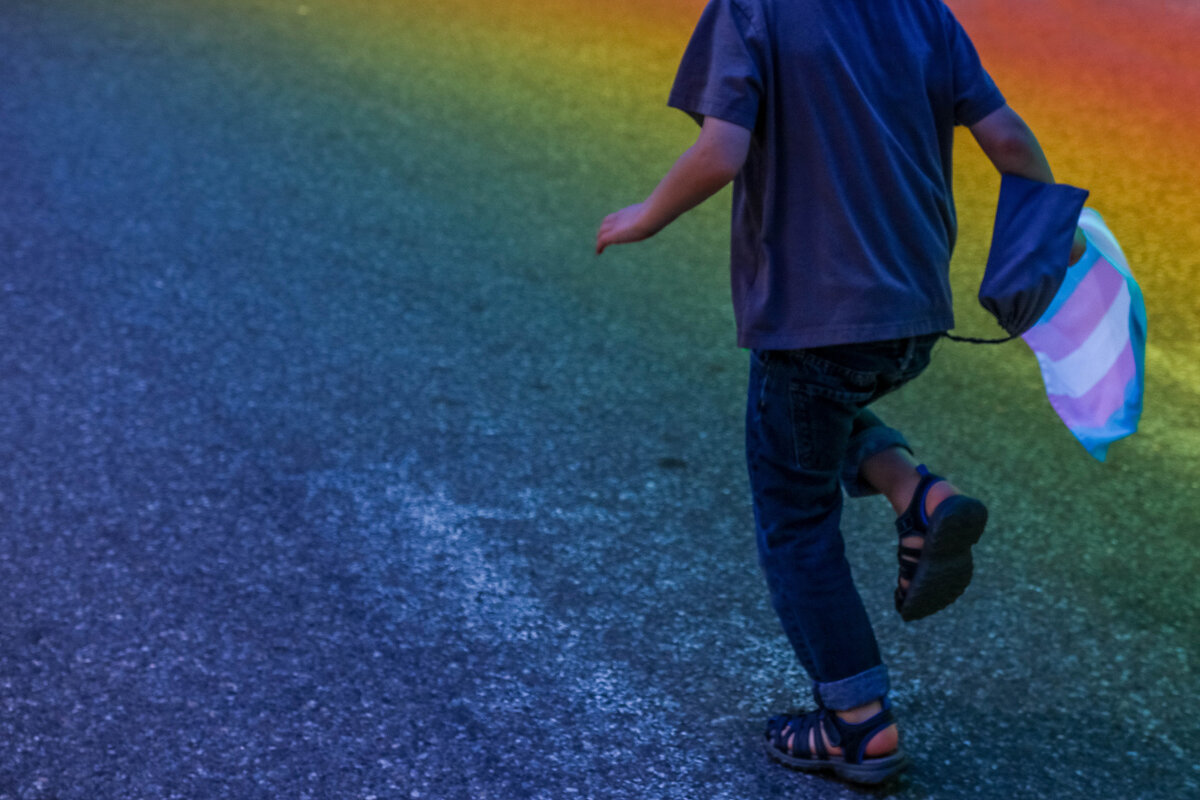talking to kids in the gender landscape
As creatives who work on content for kids, we’re dedicated to staying on top of trends and movements affecting the youth space. In recent years we’ve tracked the LBGTQ+ surge of alternative pronoun usage and realized that it would soon affect teens, tweens, and children. Not only in kids’ scope of understanding of gender and identities for family members, but also in their own self-awareness and spectrum of gender needs.
We’ve seen brands take leaps to welcome and accommodate gender neutrality, gender-fluid, and gender creative adults and older teens, but now that same nonbinary language and understanding of gender inclusivity is populating the world of tweens and elementary school students.
How should brands and companies talk to and represent kids in this landscape and what does this mean for the content we create?
Pronoun Positive -
According to a recent NBC news report, 1 and 4 LGBTQ youths use nonbinary pronouns. Most often this is they/them but other pronouns include xe/xim and ze/zir.
It can also happen regardless of gender presentation. Androgynous people can be nonbinary, and a person born female who presents with long hair and likes to wear makeup can still feel and be nonbinary. Understanding the differences between biological sex, gender, gender presentation, and sexual orientation and realizing that most of them exist within a spectrum is helpful.
One of the most powerful examples of a brand embracing this new norm is Starbuck’s #What’sYourName campaign.
One ad in the campaign depicts the negative effects a young transgender man experiences as the people in his life insist on calling him by his birth name. The ad ends with a visit to Starbucks where the young man’s name, James, is used for the first time. It is a powerful statement on the emotional importance of identity for today’s youth.
This kind of inclusive representation is crucial for the health and wellbeing of kids struggling with acceptance. By seeing someone who looks or feels like them, they understand that they are not alone and that there are welcoming and accepting people, and places in the world.
According to a recent survey by the Trevor Project, a crisis intervention organization for LGBTQ+ youth, "An individual's pronoun expression, or even the decision to avoid them altogether, is a very important reflection of a person's identity.”
People whose preferred pronouns were “respected by all or most people in their lives attempted suicide at half the rate of those who did not have their pronouns respected."
“Respecting pronouns is part of creating a supportive and accepting environment, which impacts well-being and reduces suicide risk."
Takeaway – include he/his, she/hers, and they/them pronouns in content and depictions of kids, their families, and their world.
Normalizing –
As artists like Sam Smith and Janelle Monae come out as nonbinary, kids are starting to feel the freedom and safety to express their own gender preferences.
One giant step toward normalizing the lives of nonbinary youth comes in the role of James Sullivan, played by nonbinary actor Theo Germaine, in Ryan Murphy’s Netflix show, The Politician. While both the character and the actor identify as nonbinary, this is never mentioned in the course of the show, it is simply fact. By making a nonbinary character a central part of the show without making their gender identity apart of the story line, the writers are making a much bigger statement about inclusivity.
Fashion houses have long used models who crossed gender lines but this is coming to more of a focus as transgender and nonbinary models appear in more fashion shows and campaigns. “Who” gets to look like a woman or man is shifting, just as what it means to “be a woman” shifts too as does the clothing and its implied gender meaning.
Online, companies and brands can make a difference in the categories of gender representation. For fashion retailers the “boys” and “girls” sections can be expanded to include all kids, or can be added to with a gender neutral lines like Zara (SRPLS), and H&M (Divided) have. Online forms or surveys or email sign-ups can be more inclusive and allow a user to fill in their own gender identity and pronouns – even for elementary school students and their parents.
Takeaway – When it comes to creating a welcoming environment for nonbinary individuals there are two options
1. Remove gender from the equation. Let each individual choose what is right for them.
2. Create a third category in your product development and communications, aside from boys and girls, that is non-gender.
Paying attention -
According to 13-year gender-creative activist CJ Duron, “Gender is Over.”
"I am a member of the LGBTQ community. My gender identity is male and my gender expression is female. That means that I'm awesome. Just kidding. It means that I was identified male at birth and I like my male body and I prefer male pronouns, but the way I dress and the things I like are considered feminine (whatever that means) . . . I've always known I'm different. I've always known that I'm not a 'typical boy.' And, I've never really cared that I'm different. There is no part of me – not even a single part – that wants to be a 'typical boy.'"
A perfect example of unnecessary gendering is the McDonalds Happy Meal. How many times have we been asked, “Is this Happy Meal for a boy or a girl?” Kids should be free to choose the toys they want to play with without feeling a gender stigma.
The whole idea of gendered toys feels outdated these days.
In recent years Mattel, in both its Barbie and Creatable World brands, have expanded what their dolls look like and have been more inclusive of race, physical differences, and gender identity. Creatable World “a doll line designed to keep labels out and invite everyone in—giving kids the freedom to create their own customizable characters again and again” comes with a doll whose hair and styles you can change easily.
Steven Universe was a groundbreaking show in dealing with the difficulties all tweens face in discovering their identity. Along with a diverse cast of characters that embraced every spectrum of race, sexuality and gender, the show had several nonbinary characters. As Pride.com explains it, “The show does an outstanding job in its portrayals of relationships, unique and complex characters, and the fluidity of gender. Stevonnie—the fusion of Steven and Connie—is an exemplary representation of the fluidity of gender. Above all else, Stevonnie identifies simply as themself.”
These younger generations continue to move away from gender stereotypes. We’ve seen this movement in children’s clothing and baby goods and noted that Gen Alpha is being raised in a far more neutral way than ever before.
We’ve seen how some brands are embracing non-binary and transgender young adults.
Takeaway – Broadening concepts of gender is present in many kids’ lives. It is important to listen to what kids and parents are saying, how they want to be represented, and adapt to a more expansive way of thinking about gender.
——-
Nonbinary representation is not a fad. Cultural norms are shifting for the long term and kids are already engaged, forming their own opinions and perspectives. Nonbinary representation is an important expansion of our understanding of the gender spectrum and it is vital for brands to embrace the development of inclusive products, language and imagery in a way that is inviting to everyone. How brands participate and engage could set the tone of their relationships with an entire generation.







